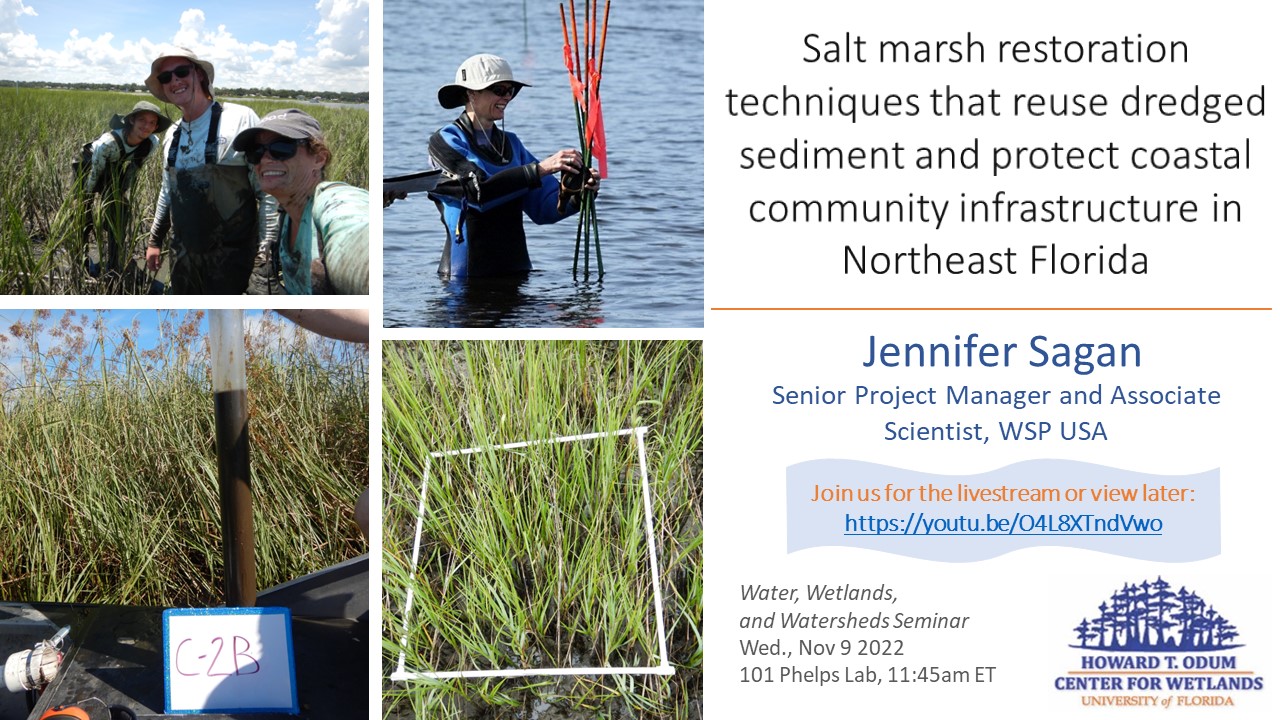
Jennifer Sagan, Senior Project Manager and Associate Scientist, WSP USA
Join us for the livestream November 9, 11:45am ET: https://youtu.be/O4L8XTndVwo
(Please visit our YouTube channel main page for the stream if there are any issues with the direct link.)
Abstract
Salt marshes provide critical habitat and act as a natural buffer, protecting critical infrastructure from storm surge and wave impacts. However, across much of the Southeast U.S. Atlantic seaboard, there are many locations where salt marshes are laterally eroding due to vessel traffic and drowning due to accelerating rates of sea level rise. The findings in our 2021 assessment provided evidence of rapid shoreline retreat and historical marsh loss totaling 100 acres as compared to the 1950s. The outcome for this project is the final design for the beneficial re-use of dredged sediment to restore 250 acres of smooth cordgrass habitat. In tandem with sediment augmentation, our project team identified locations for the placement of semi-permeable breakwalls as a means of dissipating vessel wakes and stimulating marsh progradation. This seminar will highlight the data collection and planning steps taken in the preliminary design as well as future planning for the final design and for permitting considerations.
BIO
Jennifer Sagan is a senior project manager and associate scientist with WSP USA. For over twenty years she has been involved in monitoring, assessments, and restoration of aquatic systems in Florida. She is currently managing coastal restoration and resiliency projects in the Big Bend region and St. Johns County for the USFWS, FWC, UF, and local municipalities. She leads engineering and scientific teams that incorporate ecological targets, coastal modeling, and civil, structural, and geotechnical engineering into coastal restoration project design. She has designed sampling plans for estuarine habitats that serve both as baseline data and project planning data that informs the engineering design of restored habitats and ensures projects are permittable.
pOSTCARD
